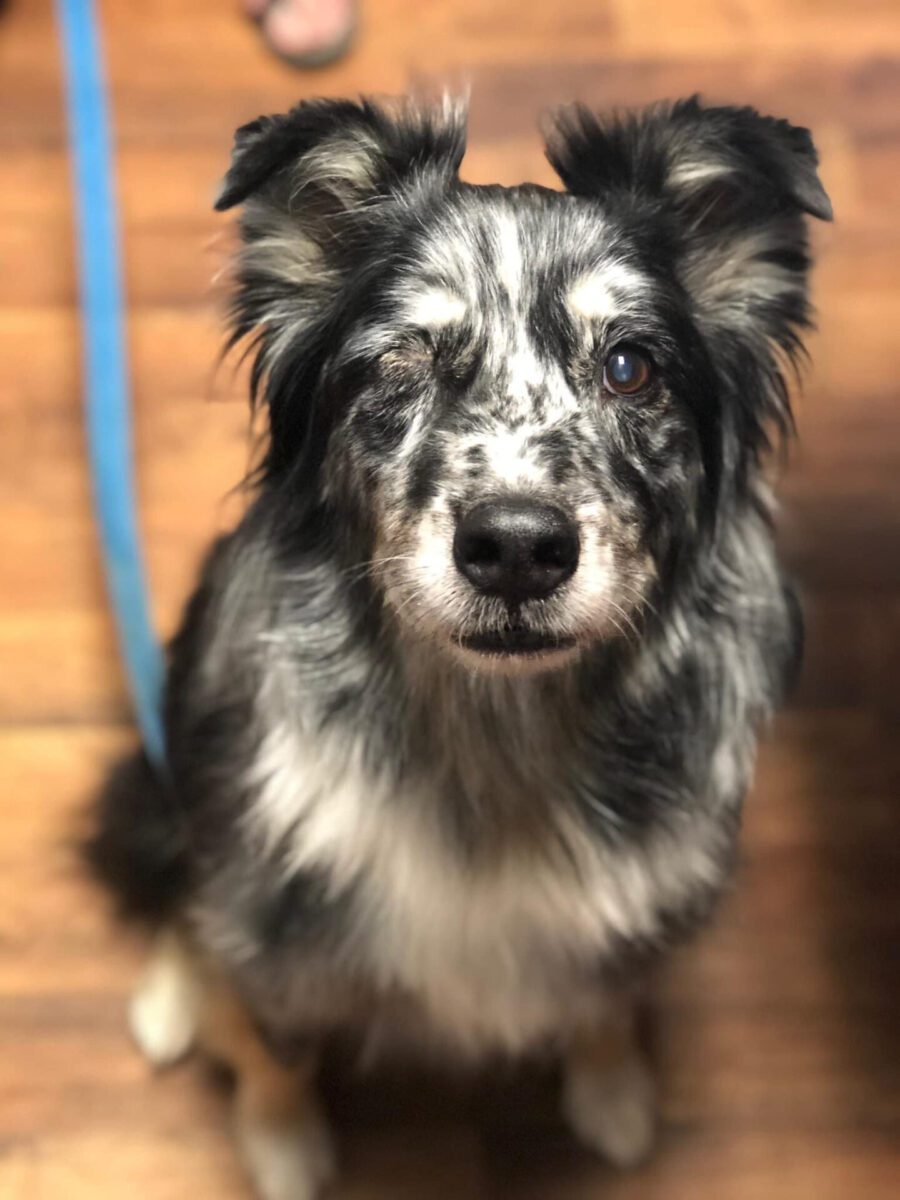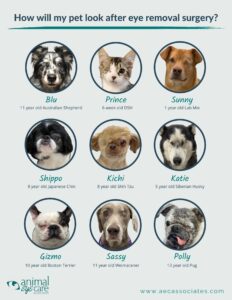Enucleation (Eye Removal)

Your Pet’s Enucleation: What to Expect
We’re here to guide you through your pet’s recovery every step of the way.
What is Enucleation?
Enucleation is the surgical removal of an eye. It is recommended when the eye is blind and painful or when other treatment options are no longer effective. Common reasons include:
- Severe glaucoma
- Trauma or corneal rupture
- Intraocular cancer
- Severe infections (i.e. endophthalmitis) or inflammation
While it may feel like a dramatic step, enucleation may be the kindest solution to relieve ongoing pain and improve your pet’s quality of life, particularly in irreversibly blind eyes.
Contact the location nearest you today to request a make an appointment for treatment at Animal Eye Care.
What To Expect After Surgery
- Appearance
- Pain Management
- Caring for Your Pet After Surgery
- Your pet will wake up with a closed surgical incision where the removed eye was.
- The eyelids will be permanently closed with internal and skin sutures or, in some cases, a small prosthetic (orbital implant) may be placed under the eyelids to minimize orbital sinking effect.
See images of recovered patients below!
- Pain medication and anti-inflammatory treatment will be prescribed to keep your pet comfortable.
- Antibiotics will be administered to decrease the risk for infection.
Most pets are more comfortable a few days after surgery than they were before, due to the relief from previous eye pain.
- Most pets recover quickly, typically within 10–14 days. A recheck will be scheduled at that time for suture removal, or to check the surgery site if dissolvable skin sutures were used.
- An Elizabethan collar (“cone”) will be necessary to prevent rubbing or scratching for 1-2 weeks after surgery.
- Activity should be restricted to allow proper healing, until the time of recheck.
- Follow all directions for administering medications and call if there are any concerns.
- Expect some swelling and bruising for the first few days. Bloody drainage may be seen from the surgical site or same side nostril for several days to a week. Notify us if you see yellow/green discharge, excessive bleeding, or the incision opens.

